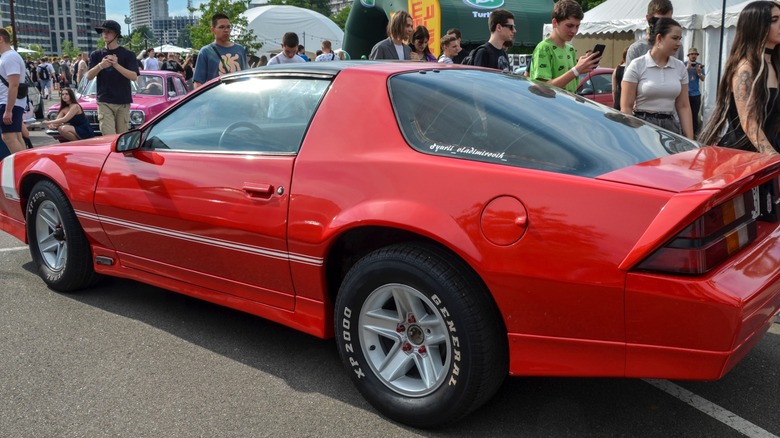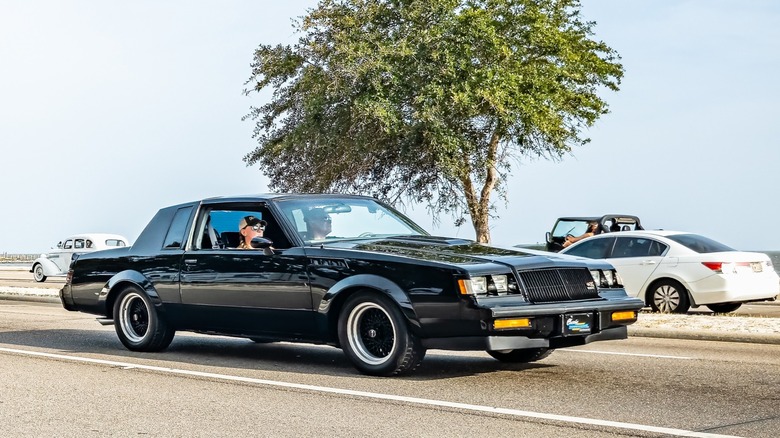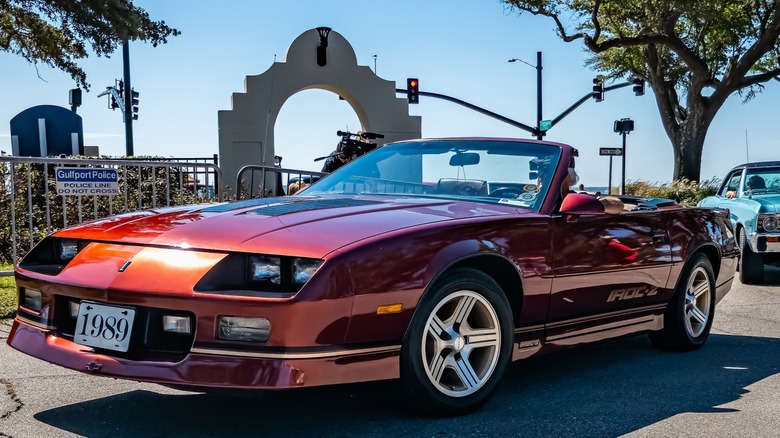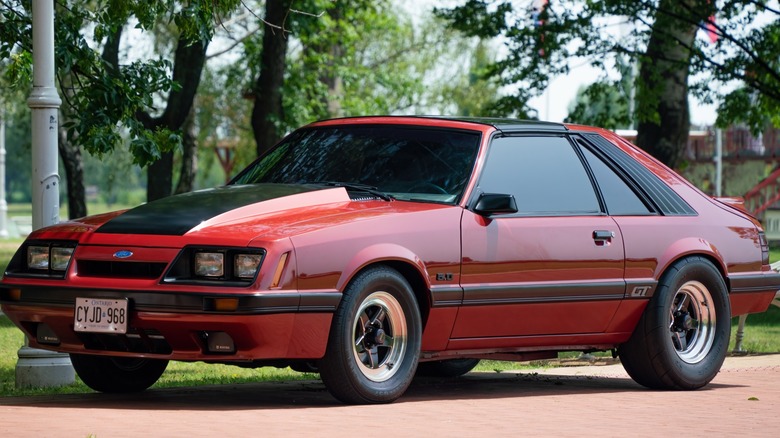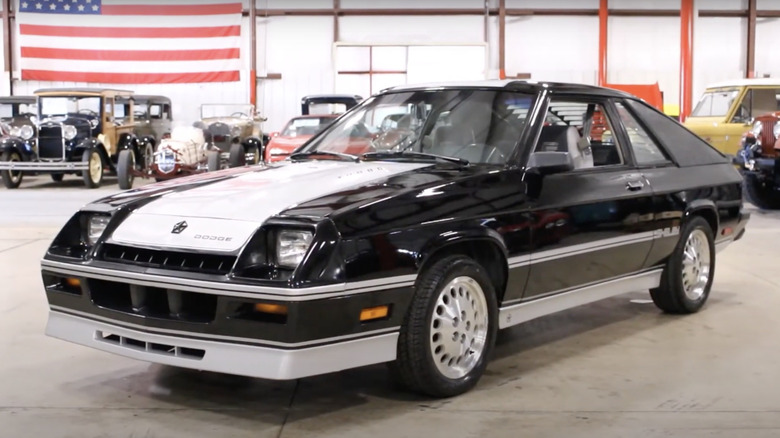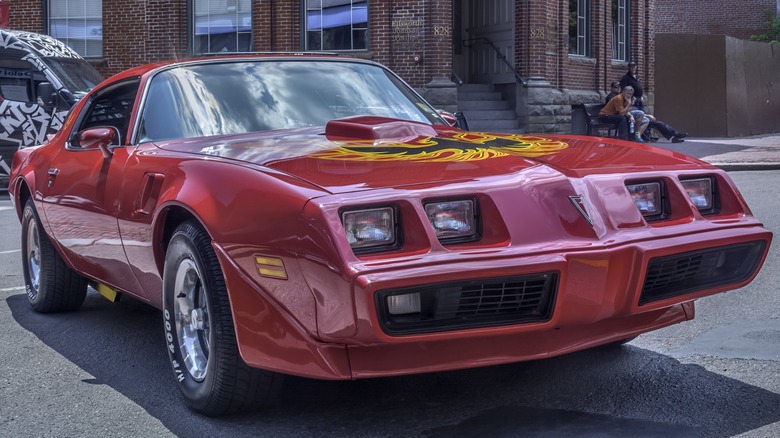5 Of The Highest Horsepower Muscle Cars Of The 1980s
Are you even a true car enthusiast if you have never wondered what cars were popular back in the day? Something about exploring the past helps us satisfy our curiosity and appreciate how far automotive technology has come. So, let's take a trip back to the 1980s, a time that was both exciting and challenging, particularly for muscle car enthusiasts.
The 1970s had been a tough time for carmakers. Fuel prices were rising, new rules about emissions were stricter, and fuel economy became more important. These changes forced companies to rethink how they made cars that could still perform well. Despite these challenges, the 1980s turned out to be a time of exciting innovation. Turbocharging became a breakthrough technology that allowed engines to produce more power without necessarily becoming bigger. At the same time, carmakers began using fuel injection and computer systems to make engines more efficient.
As such, the muscle cars that emerged in that decade were different from their predecessors, but they were remarkable in their own right. They represented the beginning of the transition from the raw, unfiltered power of the 1960s to the more refined, high-tech performance machines we see today. More importantly, these cars proved that American carmakers could innovate and thrive, even under the weight of strict regulations.
Buick Grand National GNX
The Buick Grand National GNX began as an upgraded version of the regular Grand National and then turned into something truly special, thanks to a partnership between Buick and McLaren Performance Technologies. Carefully designed and engineered, it eventually scored a position as one of General Motors' most iconic muscle cars.
What made the GNX truly special was its approach to performance. Instead of using a big V8 engine like most muscle cars, Buick went with a turbocharged V6 and added advanced technology to create something completely different. So, the Grand National GNX was fitted with a turbocharged 3.8-liter V6 engine. Buick officially said it produced 245 horsepower, but many who have driven the car believe it actually produced closer to 300 horsepower. Its speed was also just as impressive, going from zero-to-60 mph in only 4.7 seconds.
What makes GNX even more special is that Buick only made 547 of these cars, turning them into instant collector's items. Each one was carefully hand-built with unique upgrades that set it apart from the regular Grand National. The wide fender flares, special wheels, and subtle GNX badges are all special modifications that hint at the power this beast is capable of commanding.
In terms of look, the blacked-out paint gave the GNX an aggressive look. But let's be honest, this car didn't need bright paint to turn heads. Its performance alone was enough to grab attention. Speaking of attention, the Buick Grand National GNX has a strong presence in pop culture. Dominic Toretto (played by Vin Diesel) drives a Grand National in the fourth installment of "Fast & Furious" during the opening fuel heist scene. And as you can imagine, surviving models are incredibly valuable, often fetching hundreds of thousands at auctions.
Chevrolet Camaro IROC-Z
Named after the International Race of Champions, the Chevrolet IROC-Z was designed to bring professional racing excitement to everyday drivers. On a granular level, this car really was built with one goal in mind: to outperform the Mustang V8. Under the hood, this Camaro featured an optional 5.7-liter V8 engine, officially rated at 225 horsepower. The engine was paired with a four-speed automatic transmission because a manual strong enough to handle the engine's torque couldn't fit. To keep the car within the EPA's desired weight class, air-conditioning wasn't even offered as an option for this model.
On the track, the IROC-Z delivered impressive results. The engine, powerful as it is, was able to put energy to the ground efficiently thanks to the upgraded suspension and advanced ground effects. It handled corners far better than most muscle cars of its time. In fact, there was usually a smooth transition between understeer and oversteer, giving drivers precise control, even in long corners. Plus, with the superior brake balance, you could delay braking longer before entering turns and brake deeper into corners, and that really gave it an edge over its competition.
However, the IROC-Z wasn't perfect. The additional components made the car heavier. But that didn't stop it from delivering a generally smooth driving experience. Although some drivers would tell you, it often felt a lot wider than it really was. The seats were also pretty disappointing. They offered little support at high speeds. And at lower speeds, the transmission felt overly aggressive.
Nonetheless, the IROC-Z was a real head-turner. And even though Chevrolet stopped producing the IROC-Z in 1990, it remains one of the most iconic cars of that era, putting up a nice challenge to the equally remarkable Mustang GT.
Ford Mustang GT
The Ford Mustang GT is considered one of America's favorite muscle cars. However, there was a time when that reputation was shaky. After the gas crisis of the 1970s, performance cars lost much of their power, and people had begun to wonder if Ford had forgotten what made the Mustang special.
The 1980s Mustang GT changed all that. It restored faith in the Mustang as a true performance car. Early in the decade, its 5.0-liter High Output (HO) V8 engine could only deliver 157 horsepower. By the end of the 1980s, iterations of the engine produced about 225 horsepower and 300 lb-ft of torque, making it one of the most powerful cars of that time.
In 1986, Ford introduced electronic fuel injection for the 5.0 V8 in a bid to make the engine more efficient, reliable, and responsive than earlier models with carburetors. Ford also gave the GT aerodynamic upgrades: a front air dam, integrated fog lights, and functional hood scoops, along with sporty side skirts and a rear valance to give it a low, aggressive look. The sport-tuned suspension, with better springs, shocks, and sway bars, made cornering smoother and more precise.
One thing that made the Mustang GT even more popular was how easy it was to modify. Enthusiasts are still able to tune and upgrade the car to go beyond its factory specs, since there's still an active aftermarket for it. In stock form, the GT could go from zero-to-60 mph in about seven seconds, which was impressive for the time. With the right modifications, though, you could really turn it into something else. But keep in mind, while the Fox-body design made the Mustang GT lighter and faster, it wasn't very sturdy, so the chassis could bend under stress.
Dodge Shelby Charger
Carroll Shelby, famous for his work on Ford's Shelby Mustangs in the 1960s, teamed up with Dodge in the 1980s to create something truly special to revive Chrysler's market presence. The first Shelby Charger, introduced in 1983, was designed with a clear objective. It needed to be a front-wheel-drive car that was just as capable as the competition, distinct in design, and powered by a turbocharger. He wanted to match the performance of the Porsche 924 and even surpass the Volkswagen GTI. However, Shelby didn't want to create a race car; he just wanted a fun, affordable performance vehicle priced around $8,000. His philosophy was that buyers could always customize the car as they pleased after purchase.
Unlike traditional muscle cars with big V8 engines, the Shelby Charger was evidence that great performance could come from a smaller, more efficient design. Completed in just 90 days, the car featured a front-wheel-drive setup and a 2.2-liter naturally aspirated engine. It produced 107 horsepower at 5,600 rpm, 13 more than the standard version of the engine. This was thanks to small upgrades, like raising the compression ratio and adjusting the camshaft for better high-speed performance. The car also handled well, with excellent steering that some drivers considered better than cars like the Camaro Z28 or Mustang. However, the front-wheel-drive layout did occasionally produce torque steer when you hit the gas hard.
By 1987, the Shelby Charger had evolved into a turbocharged version capable of producing 175 horsepower and 175 pound-feet of torque, allowing the car to go from zero-to-60 mph in just 6.7 seconds. There was barely any lag between pressing the accelerator and the engine responding. Overall, the 1987 model was the fastest and most powerful Charger of the 1980s.
Pontiac Firebird Trans Am
At the start of the 1980s, rather than let new fuel economy standards slow down its Firebirds, Pontiac decided to innovate. Turbocharging had become the go-to solution for boosting performance while maintaining fuel efficiency, so Pontiac took its largest engine — a 302-cubic-inch V8 (marketed as a 301) — originally designed in 1977 for smooth and fuel-efficient station wagons and reimagined it as a performance powerplant.
By adding an AiResearch TBO305 turbocharger and setting boost pressure at an impressive 9 psi (higher than similar setups designed by Buick or Ford), Pontiac transformed the 4.9-liter engine into a high-performance motor capable of delivering 210 horsepower and 345 lb-ft of torque. Just like that, the Trans Am was a fast and fun muscle car. Beyond the engine, the car's aerodynamic design, developed using wind tunnel testing, further improved the car's speed and fuel efficiency. In terms of looks, the Trans Am was hard to miss with its pop-up headlights, the bold "screaming chicken" hood decal on select models, rear spoilers for improved stability, sleek side skirts, ground effects, aggressive air vents, and unique Trans Am badges.
Toward the end of the decade, in 1989, Pontiac celebrated the 20th anniversary of the Trans Am by producing 1,500 special models powered by a turbocharged Buick 3.8-liter V6 engine. This limited-edition car was chosen as the official pace car for the 1989 Indianapolis 500. This improved turbocharged Trans Am could sprint from zero-to-60 mph in just 4.6 seconds. While Pontiac rated it at 250 horsepower, experts believe it delivered closer to 300 horsepower on the road, officially making it the fastest U.S. production car at the time. This further established its legacy as one of the most iconic American muscle cars of the era.
